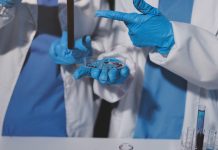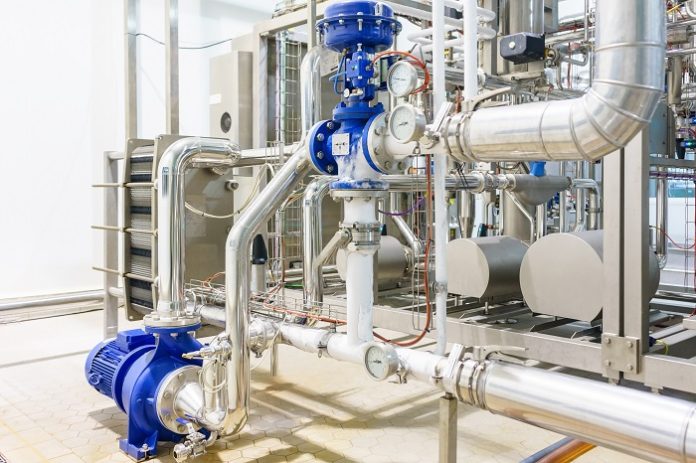“Efficient separation methods cut production costs, enable material recycling, and enhance competitiveness. With separation processes contributing over half of the manufacturing costs, advances in separation techniques promise improved profits. Investment in innovative separation technologies is key to improving the industry’s sustainability”.
Separation is the Key
s
eparation is a cornerstone in the chemical process industry with significant economic implications. Efficient separation processes are crucial for purifying raw materials, recovering valuable products, and meeting stringent product specifications. Poor separation can lead to product impurities, reduced yields, and increased waste, impacting both quality and profitability.
Economically, effective separation methods can reduce production costs by maximising yield and minimising waste disposal. They enable the recovery and recycling of valuable materials, reducing the need for raw material acquisition. Additionally, separation technologies often determine the feasibility and competitiveness of chemical processes.
Advances in separation techniques can offer improved efficiency, selectivity, and sustainability, translating to long-term economic benefits for the industry by lowering operational costs and enhancing product quality. Investment in innovative separation technologies is crucial for maintaining competitiveness and sustainability in the chemical industry.
Ionic Liquids
Ionic liquids are organic salts that are liquid around and below 100 degrees C. The cations are organic, for instance, imidazolium, pyridinium, aliphatic ammonium, alkylated phosphonium and sulfonium ions, while both inorganic and organic ions can be used as anions. Unlike solid inorganic salts, the ions in an ionic liquid are not held together in a rigid crystal lattice. Instead, they are surrounded by bulky organic molecules, which prevent them from forming a solid structure. This unique property gives ionic liquids several advantages. They have extremely low vapour pressure. They are very stable and can withstand high temperatures without decomposing. The properties of ionic liquids can be fine-tuned by manipulating their constituent anions and cations.
The first ionic liquid, ethyl ammonium nitrate, was reported in 1914 and the first patent on ionic liquids appeared two decades after its discovery in 1934, claiming cellulose dissolution. But since then, they have been largely ignored by the chemical fraternity. But now they are staging a comeback. Ionic liquids have grabbed the attention of researchers working in Green Chemistry. They can replace conventional volatile solvents in many physical and chemical processes. Ionic liquids are known as “designer solvents” as they can be tweaked to optimise a specific outcome.
Experimental studies have established the potential of ionic liquids to break azeotropes. They are also capable of forming aqueous biphasic systems, which is a useful property in liquid-liquid extraction. Ionic liquids are being used in advanced techniques for separation, extraction and purification of different types of compounds. Dissolution of biomass is essential for their effective utilisation and this is not easy because of their complicated and rigid structure. Ionic liquids have emerged as good solvents to dissolve cellulose, the most abundant and useful constituent of biomass. Ionic liquids have demonstrated remarkable proficiency in separating acidic gases like carbon dioxide and hydrogen sulphide from other gases like methane and nitrogen. Another potential application of ionic liquids is in wastewater treatment to remove heavy metals.
Membrane Distillation
Membrane Distillation is a separation method driven by thermal energy, where only vapour molecules move across a microporous hydrophobic membrane. The process relies on the vapour pressure difference between two sides of the membrane, created by a temperature gradient. This gradient is established by circulating a hot feed solution and a cold permeate solution. Vapour from the hot feed solution travels through the membrane and condenses on the cold solution side, producing distilled water. The vapour pressure difference grows as the temperature gap between the feed and permeate solutions widens. One of the key benefits of Membrane Distillation is its ability to operate at low temperatures, typically below 80°C.
In Membrane Distillation, the hydrophobic properties of the membrane allow water vapour from the hot feed to pass through its pores. However, it prevents liquid feed water from entering these pores due to its low surface energy. This creates liquid-vapour interfaces at the membrane pore entrances. To maintain efficiency, the pores of the membrane should remain dry to stop liquid feed water from passing through.Since hydrophobicity is the basic requirement for the membrane distillation process, the membrane material must be intrinsically hydrophobic, or its surface must be modified to be hydrophobic. The most commonly used membranes for membrane distillation are made from polypropylene, PTFE and PVDF.
Membrane distillation offers promising applications in desalination, wastewater treatment, and concentration of food and pharmaceutical products. Its ability to handle high salinity, low-quality feedwater, and volatile compounds sets it apart.Membrane Distillation can be powered by low-grade heat sources, making it energy-efficient compared to traditional methods. However, challenges persist. Membrane fouling, due to the deposition of contaminants, reduces efficiency and requires frequent cleaning. Scaling issues can also affect performance and increase operational costs. Membrane durability and cost remain concerns, hindering widespread adoption. Process optimisation and membrane advancements are crucial to overcoming these challenges and unlocking the full potential of Membrane Distillation. Top of Form
Metal-organic Frameworks
Metal-organic frameworks (MOFs) have emerged as a ground-breaking class of materials with promising applications in various fields, particularly in advanced separation techniques. MOFs are porous crystalline materials composed of metal ions or clusters coordinated with organic ligands, forming a network structure with a high surface area and tunable pore size. This unique structure offers exceptional properties that make MOFs highly effective for separation processes.
One of the key advantages of MOFs in separation applications is their high porosity, which provides a large internal surface area for the adsorption and separation of molecules. The tunable pore size of MOFs allows for selective adsorption of specific molecules based on size, shape, and chemical properties. This enables MOFs to separate mixtures of gases, liquids, or solids with high efficiency and selectivity, making them superior to traditional separation methods.
MOFs also offer flexibility in design and synthesis, allowing designers to tailor their properties for specific separation tasks. By choosing appropriate metal ions and organic ligands, MOFs can be customised to target particular molecules or ions in a mixture. This flexibility in design has led to the development of MOFs with enhanced performance in separating a wide range of substances, from hydrocarbons and greenhouse gases to pharmaceuticals and toxic chemicals.
Another significant advantage of MOFs is their potential for regeneration and reuse. Unlike some conventional separation materials that degrade or lose efficiency over time, MOFs can often be regenerated by simple processes such as heating or vacuum treatment, restoring their original performance without significant loss of adsorption capacity. This not only reduces the cost of separation processes but also contributes to sustainability by minimising waste and resource consumption. Furthermore, MOFs exhibit excellent stability under a variety of conditions, including temperature, pressure, and chemical environments.
Epilogue
Separation processes account for well over half of the capital and operating costs in the chemical industry. Emerging separation techniques have the potential to revolutionise the chemical industry by making processes more efficient, sustainable, and cost-effective. As research and development continue, we can expect to see even more innovative separation technologies emerge in the coming years.

































